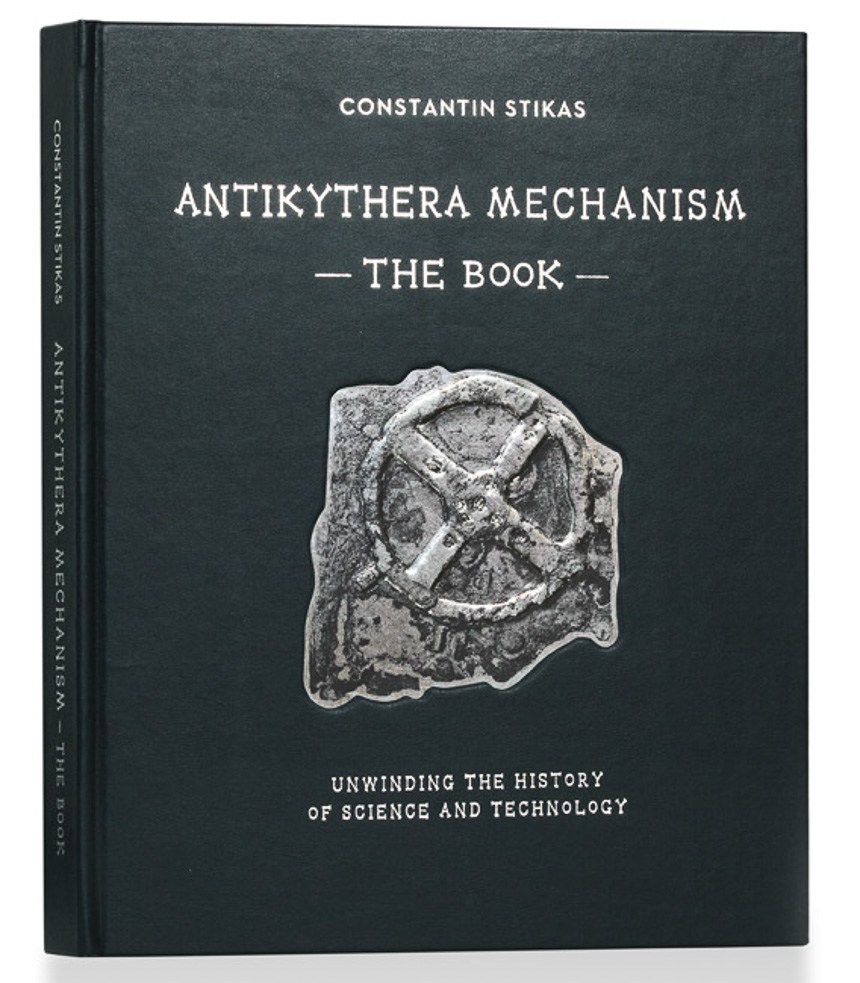 Watch writer and author Constantin Stikas has just released a new book on the famed ancient Greek Antikythera device, which was an astronomical clock-style device discovered in the 20th century aboard a ship wreck off the coast of Greece. In 2011, watch maker Hublot released a miniaturized version of the Antikythera in watch form that aBlogtoWatch debuted here. Working with Hublot, other watch makers, along with scientist and other experts, Stikas has collected a wealth of information as well as modern context through a series of interviews and research on the impressive and mysteriously created ancient piece of clockwork. Here are some words from him about the book, and from the book:
Watch writer and author Constantin Stikas has just released a new book on the famed ancient Greek Antikythera device, which was an astronomical clock-style device discovered in the 20th century aboard a ship wreck off the coast of Greece. In 2011, watch maker Hublot released a miniaturized version of the Antikythera in watch form that aBlogtoWatch debuted here. Working with Hublot, other watch makers, along with scientist and other experts, Stikas has collected a wealth of information as well as modern context through a series of interviews and research on the impressive and mysteriously created ancient piece of clockwork. Here are some words from him about the book, and from the book:
ABOUT THE ANTIKYTHERA MECHANISM
The Antikythera Mechanism is an elaborate and quite well-made astronomical instrument, the earliest artifactual evidence of the ancient use of toothed gearing, and at the same time, it is the world’s oldest computer.
The main purpose of the instrument was to show, on its front dial, the apparent positions of the Sun, the Moon and the five known planets: seven pointers indicated the places of these bodies on a scale representing the Zodiac. An inscription, the “Parapegma,” indicated the risings and settings of stars and constellations throughout the year. On its back dial, the instrument displayed a lunisolar civil calendar, the 4-year Olympiad cycle, and the Saros eclipse recurrence cycle.
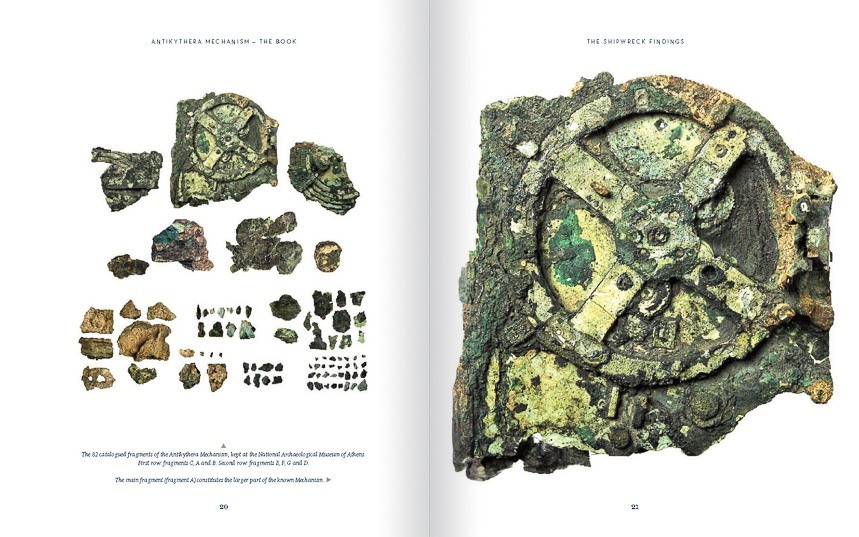
INTRODUCTION OF ANTIKYTHERA MECHANISM – THE BOOK
Though it is difficult to understand exactly how the Antikythera Mechanism worked or what its place is in the history of mankind, it may also be hard to believe that it even actually existed.
This is, after all, why it has been the object of wild conjecturing ever since it was first presented internationally as a computer in the mid-1970s, when its existence was even attributed to… alien visitors!
Before its serendipitous discovery in 1901 the Antikythera Mechanism was a non-existent object even for scientists and historians. So for centuries we were safe in the assumption that the ancient Greeks were not technologically advanced; that gears first appeared in Italy during the Renaissance; that what the ancient Greeks knew about the motion of celestial bodies was entirely incorrect, etc.
Upon its discovery, ignorance was replaced by mystery. And what a mystery! Not the kind invented by writers, but the deeper mystery that only real life can devise.
The Mechanism was not found in the ruins of an ancient temple or palace. Nor was it found inside a great tomb, buried next to its once mighty owner. It was discovered by accident at the bottom of the sea, where it had remained for over 2,000 years, corroded by sea water and covered in seaweed. It was part of the greatest treasure ever discovered in a shipwreck, among some of the finest specimens of ancient Greek art. And it was found by a team of Symiot sponge divers looking for some seafood for their lunch. It was also the sponge divers –and not maritime archaeologists– who retrieved the shipwreck findings in what was the first underwater excavation in history.
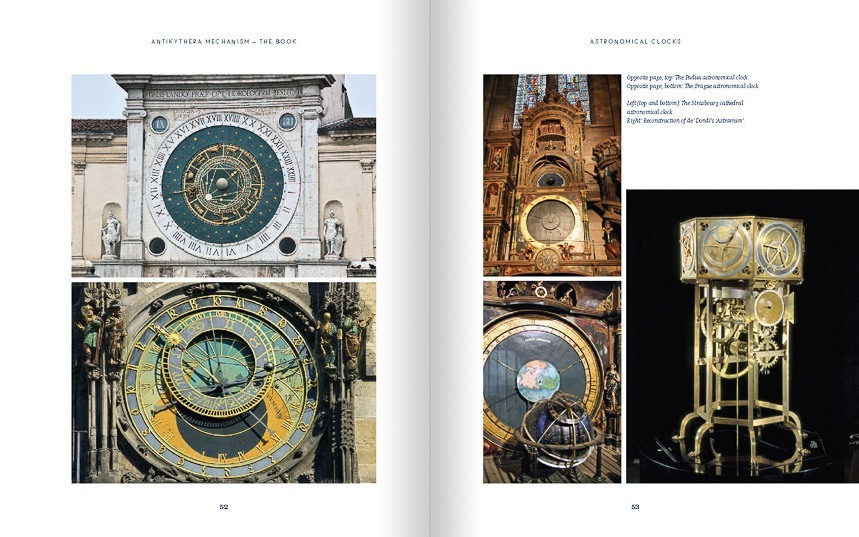
Moreover, there were inscriptions on it. In fact, it is the only ancient object that has ever been found to come inscribed with a manual!
Today, if anyone tries to “unravel the mystery” and decides to probe deeper into the subject, they will soon find themselves faced with findings and conclusions that will confuse them even more: “The Mechanism is the predecessor of the gearbox in automobiles.” “The Mechanism was not unique in its time” – but, had it not been found by accident, no one would even have imagined that such an advanced item could have existed 2,100 years ago. “The indications for the motion of the Moon on the Mechanism are subject to Kepler’s third law” – which was formulated 1,800 years after the Mechanism was built (with Kepler being totally unaware of the Mechanism’s existence)! “The Mechanism contains an indication for what we call the Equation of Time” – several centuries before this term was introduced. “The Mechanism is the first mechanical computer!”
Naturally, many prominent scientists of various disciplines have studied and are still studying the mystery, and some have dedicated decades of their life’s work to it, often with impressive results.
However, how much of this knowledge has reached its final recipient, Mr. Everyman? How much of this knowledge has been absorbed and become part of our lives; or helped us to better understand who our ancestors were, what they were capable of making, and the relative value of what we can make today? How would things be different if that knowledge had not disappeared for about one thousand years?
The Antikythera Mechanism rewrites the history of mechanics, of science, of technology, of the fabric of our lives – and yet there was not a single book with all this knowledge together in one place.
That was how I came up with the idea of writing a book that would answer this need.
The concept was simple.
On the one hand, the book presents the maximum of information and scientific knowledge based on the evidence that research has produced with the help of technological advancements in the last decade, as well as historical evidence – and it all comes straight from the most prominent protagonists of international research regarding the Mechanism.
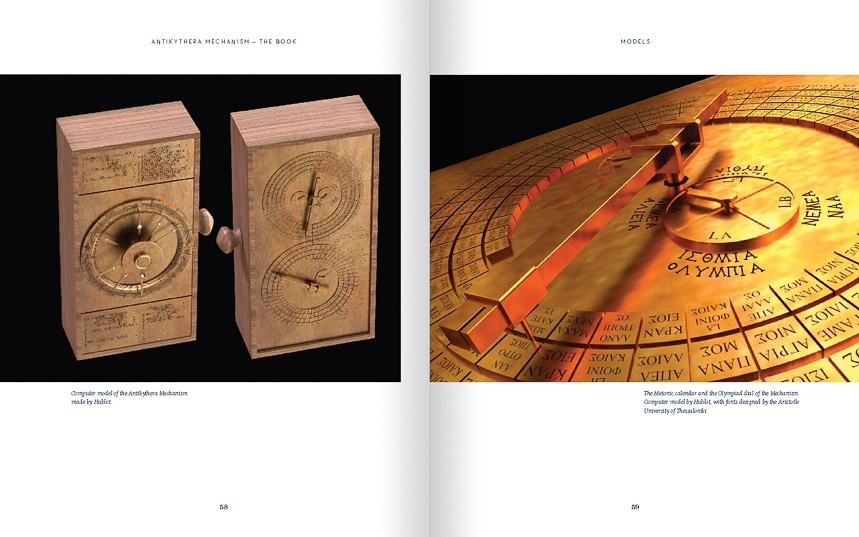
On the other hand, it presents, for the first time in such a clear and well-documented manner, the connection between the Antikythera Mechanism and the history of horology, as seen by the most eminent historians, engineers, and experts in the field of horology, the history of which is now rewritten and establishes the Mechanism as the first known link in a “chain” that extends to our own era, with the manufacturing of the most impressive and complex astronomical timepieces of our time.
All of the book’s scientific and historical knowledge is offered through the answers given by the most distinguished researchers of the field to specific questions in interviews, looking for answers that help us understand what really interests and concerns us all. I think this approach can lead to better results for the intended readership of this book than the standard presentation for academic journals or museum catalogs.
Well, is the Antikythera Mechanism related to the gearbox in cars, to Kepler’s third law? What delayed the spread of technological knowledge already acquired by ancient Greeks, creating a gap of a thousand years in history? And, finally, is this the same knowledge that reaches all the way to modern-day wristwatches and other modern devices and applications? Did the ancient Greeks invent the computer?
In the book’s novel approach, the most profound and sophisticated scientific research conducted by outstanding scientists is presented in an extensive and creative manner, while the material also reaches out to the book’s readers and answers their questions, poses new ones, fills them with strength, pride, and inspiration. It even becomes a game, both constructive and instructive – a game played in the classroom or with LEGO bricks.
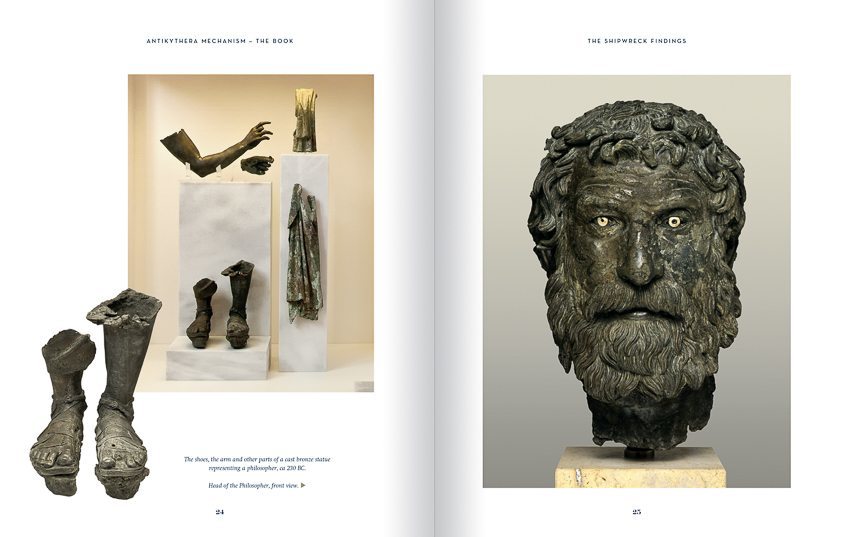
HUBLOT IN ANTIKYTHERA MECHANISM – THE BOOK: Excerpts & Quotes
Hublot’s contribution to the study and promotion of the Antikythera Mechanism as well as the connection between Greek antiquity and modern Swiss watchmaking are covered for the first time in Antikythera Mechanism – The Book, through the interviews of some major personalities in the world of haute horlogerie as well as of scientists and historians who have studied the topic. Here are some excerpts from their interviews.
- Dominique Fléchon, a prominent horology historian, gives a historical analysis of the course of clock-making from the Antikythera Mechanism to the Swiss masterpieces of today.
“…I first heard people talk about the Antikythera Mechanism when Derek de Solla Price’s study was presented in 1974. The photographs of the object, its X-rays, as well as the attempt to reproduce it clearly showed that it was a gear-bearing mechanism. This fact conformed perfectly with my views at the time: the mechanical clock couldn’t possibly have been made from scratch…”
“…The Antikythera Mechanism re-writes the History of Engineering only for those who, voluntarily or not, ignored its roots, which were initially developed by the Greek scholars and scientists: Archytas of Tarentum, Ctesibius, Archimedes, Philo of Byzantium, Hero of Alexandria, to mention just a few. With respect to Aristotle’s work entitled Mechanics, the French astronomer François Jean Dominique Arago noted in the 19th century: ‘It is not possible for us to interpret this passage of Aristotle’s differently, other than by assuming that there were circles that bore teeth in such a manner that the movement of one circle was transferred to the other, while it was sufficient for one to start moving, for all of the others to move…’”
- Aurel Bacs, one of the most important watch collector “gurus” in the world and passionate man, speaks with enthusiasm about the Antikythera Mechanism, which fascinates him…
“…For me the most important thing we can gain from the existence of the Antikythera Mechanism is that we are not the best, the most powerful that the planet has ever seen. I believe that there have been geniuses before us who were much more gifted with creativity and imagination than those today… Since we do not understand what these geniuses wanted to achieve, or actually achieved in their time, we must –with all our tourbillons and all our gadgets– be truly modest and show enormous respect to these people…”
“…As the Hublot Antikythera is exhibited at the Museum of Athens but also in Paris, I have two thoughts: that Jean-Claude Biver is a genius! A genius in marketing, an unselfish genius, a genius in communication, he definitely played his role. But I also believe –coming back to my previous answer– that today, 2,100 years after the invention of the Antikythera Mechanism, we, with all our computers and tools, we made the same thing a little smaller for a million dollars. I believe that it is equally humiliating as purifying for our soul to see the modern next to the ancient in Athens, and see what 2,100 years has meant for our culture, for the human race, in terms of the evolution of engineering…”
“…Under the guidance of Jean-Claude Biver, Hublot wants to prove that they are not only capable of making a watch with titanium components and ETA movement in collaboration with football players, but they truly want to prove, especially with the integration of the team of Matthias Buttet, that they are a serious candidate in the field of complications. […] The Antikythera Mechanism re-creation by Hublot is something more important. It is in the category of the Sky Moon Tourbillon, what we call folie horlogère, where industrial knowledge is worth next to nothing and one enters the world of Ultra-Haute Horlogerie. And there are possibly only 10 to 20 people on the planet who have access to this. I think it is proof that Hublot have the inside knowledge to create Grandes Complications…”
- Philip Poniz, horological historian, Court Expert and Master Restorer, studied the Antikythera Mechanism in his high school years and met Derek Price in that context in the early 1970s.
“…No mechanism with a geared train had ever been found before Antikythera and it took another 1300 years until something comparable was built. It was a breathtaking find of unheard-of complexity in ancient Greece, with zodiac indications strongly suggesting an astronomical purpose of the device. Its importance was, and still is, extraordinary, in view of the history of technology…”
“…The complexity of the Antikythera Mechanism’s gearing we find only centuries later in clocks, water mills, steam-powered machines, etc., all those elements forming the Industrial Age. If this technology had not been lost for centuries, Western civilization would have entered the industrial age a millennium before it had. Consequently, today we would be far more technologically advanced, colonizing the Moon and Mars. This discovery turned the world of technology upside down and led us to reevaluate our image of the ancient Greeks…”
“…I am happy to see a great wave of interest in the Mechanism during the last decade. Hublot’s homage to the Antikythera in the form of a wristwatch reproduction reflecting the latest interpretation of the mechanics of the instrument is a clear sign of the current awareness of the revolutionary nature of the Mechanism. I hope that this is not merely an intellectual appreciation on Hublot’s part, but that it paves the way for others to follow suit…”

- Stephen Forsey, co-founder and co-owner of Greubel Forsey, a high-end watchmaking company, is one of the few contemporary engineers who can boast that they have conceived a planetarium. Of course, he is a great admirer of the Antikythera Mechanism.
“…What also impresses me is how they managed to make such accurate calculations in antiquity. As you can imagine, I can very well appreciate the difficulty of the task, precisely because I witnessed the work done by the mathematicians we cooperated with to create our own planetarium, in order to get their calculations right, and I saw the databases they used. It seems incredible how the ancient Greeks could make all these calculations, especially when one considers that up until 1500 AD people believed that the Earth could well be flat! […] What is also interesting is how they managed to construct the gears, which are very well made, while they also had many teeth and often an odd number of them. This is work that is difficult to do, even with a machine…”
“…It is definitely very interesting that the Mechanism was reconstructed in the dimensions of a wristwatch. It is wonderful, and I also believe that it is very significant that they will auction this watch to collect money for research on the Mechanism. It is an amazing initiative. Hublot’s interest in the Antikythera Mechanism makes us more aware of our history and makes us want to know more about our engineer ancestors, so that we can pass this on to future generations…”
- Yanis Bitsakis, a physicist and science historian, joined the Antikythera Mechanism Research Project in 2005. He provides the link between the project’s different sectors: In basic research, he coordinated the reading of the inscriptions. His acquaintance and friendship with Mathias Buttet led to the launch of the Hublot Antikythera Project. He was involved in organizing the 2014 expedition to the site of the Antikythera shipwreck.
“…Mathias Buttet organized a meeting with Jean-Claude Biver and this resulted in active participation of Hublot in the exhibitions. In Athens, there was an impeccable collaboration of the team at Hublot with the staff of the National Archaeological Museum, which has managed in difficult times to set up one of the most important exhibitions worldwide, for which we can be proud! And the story is not over yet: After the wreck exhibition, the trip continues with the ‘Return to Antikythera’ diving expedition, and the exhibition will travel to Basel in Switzerland…”

- Jean-Claude Biver, Chairman of Hublot, the Swiss luxury watchmaker, is more than a successful businessman; he is a visionary. He is the man who believed in Mathias Buttet’s vision and gave birth to the re-creation of the Mechanism in the size of a Hublot wristwatch, thus giving rise to exhibitions, events, the new underwater excavation at Antikythera and an enormous round of international publicity for this unique object and its history.
“…Our main aim was to contribute towards making more people aware of the history of the Mechanism, for us to succeed in making this exceptional Mechanism known. Who else would have been more suitable for promoting such an issue than a watchmaking company? And, of course, we were not going to miss the opportunity to be the first and only ones in the entire watchmaking industry to be involved with the Mechanism!…”
“…The Antikythera Mechanism teaches the watchmaking industry to be humble, but also to bow before the knowledge of our ancestors, who had the same level of knowledge as us, although, of course, they were superior to us, since the creations of the past did not have the technological support that we enjoy today…”
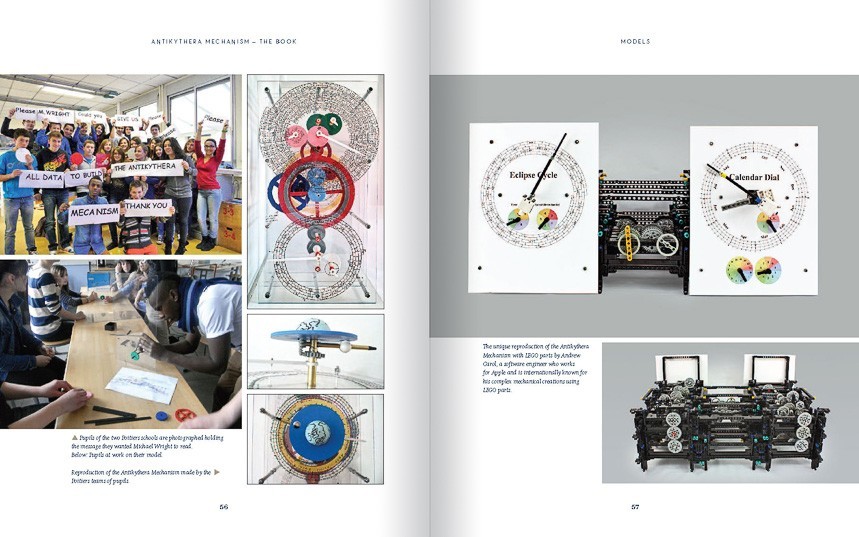
- Anyone who comes into contact with the work of Mathias Buttet, the brilliant director of the R&D department at Hublot, will find it hard to decide what to admire first: His outstanding technical knowledge? His unique ability to innovate? The philosophical dimensions of his work? The humour behind each one of his technical achievements? The person who conceived and masterminded the re-creation of the Antikythera Mechanism in a Hublot wristwatch talks about his unique adventure from the first day he came across the Antikythera Mechanism until today.
“…Considering that the mechanism was a masterpiece of our ancient ancestors, brought back to the surface (one might almost say ‘miraculously’) to remind us that we are but their heirs, I felt the desire to create a contemporary miniature version in tribute to their genius. Finding out about this extraordinary mechanism was a revelation, one could even say that it was a paradox, because it is a novelty more than 2,000 years old! I really felt like Indiana Jones discovering a mobile phone inside an Egyptian sarcophagus!…”
“…This ancient mechanism contains tricks that are not used in current mechanical engineering, including watchmaking. There are some very clever ‘tricks’. In fact, the Antikythera Mechanism permits variable gear ratios to be used while keeping the same gear trains. […] Our ancestors developed a gear system that I like to call ‘variable geometry gearing’. […] in brief, the trick is to move the pinion slightly away from the wheel during operation, while the two remain enmeshed. […] which results in the system slowing down; when they move closer to each other, the space between the teeth decreases, the tooth flanks come into contact with each other much faster, thus increasing the speed…”
“…Whenever I look at our contemporary designs for calendar watches with Moon-phase indication, I feel humbled and, at the same time, very proud to contribute a little to the disclosure of our ancestors’ genius…”
“…If we made a time-keeping mechanism today with the same precision as we find in our Moon-phase calendars, we would be less accurate than our ancestors were when making the Antikythera Mechanism. Clearly, their intention was to create a mechanism with ‘perpetual’ indications and, without this mechanical ‘variable geometry’ trick, this would not have been possible. The Antikythera Mechanism corrects the calendar by one day every seventy-six years…”
“…This project, this study, this venture are different from all the other watchmaking concepts that I have participated in so far. Its philosophical, historical, technical, human dimension make it totally unique…”
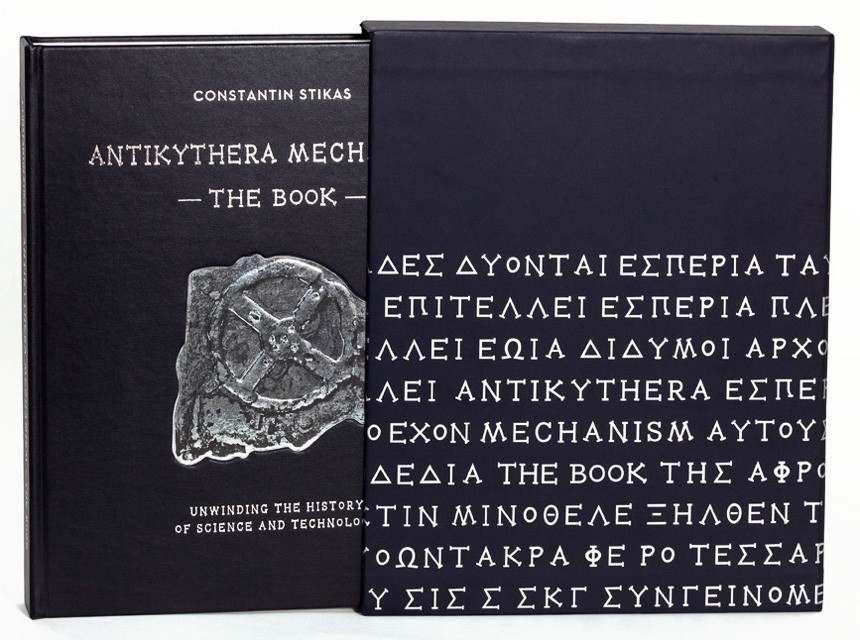
PUBLICATION DETAILS
There are two versions of Antikythera Mechanism – The Book: both have the same content and the same qualities, such as the handmade binding, the hard cover with the Mechanism in high relief, 216 pages, the same grade of paper, etc. The luxury version is lined with leather and comes in a specially designed box, and there is also a version with a cloth cover. Price is $72 – $199.
ANTIKYTHERA MECHANISM – THE BOOK website (click here).
